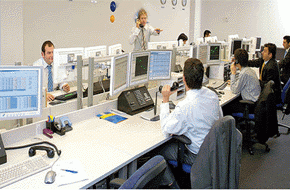

Market sentiment has perked up leading into the US Thanksgiving holiday tonight, seeing global equities higher, a modest rise in global rates and supporting commodity currencies.
After back-to-back falls in the S&P500 index cumulating to a 3½% retreat over the past couple of days, the index has recovered some lost ground and is currently up 1%. The newsflow has been more negative than positive over the past 24 hours, so we’ll put the increase down to “more buyers than sellers”, than any fundamental force. The energy sector is leading the way, with oil prices rebounding 2-3% after yesterday’s falls of more than 6%.
The bounce in oil prices is interesting considering the stream of negative headlines we can see, perhaps a sign that the market has become short-term oversold. Those headlines include Saudi oil production rising strongly in November, and production across Saudi Arabia, the US and Russia at a near-record level, a report that oil production in the US Permian basin might soon been profitable at a price of just $30 a barrel, and the pipeline bottleneck in Texas set to ease by the end of next year. President Trump tweeted “Oil prices getting lower. Great! Like a big Tax Cut for America and the World. Enjoy! $54, was just $82. Thank you to Saudi Arabia, but let’s go lower!”. We see this as a slightly odd comment when the US is now the world’s largest oil producer and the country and its trade balance would benefit from higher oil prices.
US-China trade tensions haven’t gone away. Yesterday the Office of the US Trade Representative released an updated report on the investigation of China’s trade practices regarding technology transfer, intellectual property, and innovation. The report concluded that “China fundamentally has not altered its acts, policies, and practices” in this area and “indeed appears to have taken further unreasonable actions in recent months.” The report increases the pressure on China to come up with something ahead of the Xi-Trump meeting at the end of the month.
In economic data, US headline and core durable goods orders were weaker than expected, further possible evidence of soft business investment as import tariffs take effect, while initial jobless claims are trending higher, even excluding the impact of the hurricanes, a possible early warning signal of a softening labour market. Existing house sales were stronger than expected, although the data showed a rise for the first time in 7 months after significant recent weakness.
Newswire MNI reported that the Fed could end its cycle of interest rate hikes “as early as the spring, as it starts to consider at least a pause to its gradual monetary tightening”, according senior Fed sources. The report noted that the Fed is just one or two hikes away from a point where major decisions have to be made about the outlook, so while a December rate hike is all but assured, the debate will become more lively beginning at the central bank's March meeting and certainly by June. It added that last week’s seemingly more dovish comments by Fed vice-chair Clarida in a CNBC interview was part of a coordinated step, following the market reaction to Chair Powell’s upbeat remarks in early October.
The USD weakened after the release of the above report, although we wouldn’t consider the market reaction as significant, and it simply confirms what the market has been thinking. The NZD and AUD have been the best performing, up around 0.5-0.6% overnight to 0.6840 and 0.7270 respectively, with the cross steady around 0.94. Changes in the other majors against the USD have been within +/- 0.2%.
US Treasury yields are up 1-2bps across the curve, reflecting the risk-on backdrop and higher oil prices. Italy’s 10-year rate is down 15bps as the market takes a more optimistic view on the budget stand-off with the European Commission. As expected, in its annual review the commission said that Italy’s budget is in “particularly serious non-compliance” of EU limits. But the market hooked on to Italian Deputy Premier Salvini’s comment that although he won’t compromise on core items such as tax cuts and a basic income for the poorest, he is willing to make tweaks and is open to dialogue. Those comments have also helped push EUR up to 1.14.
It should be a quiet end to the end with the US holiday tonight and a light economic calendar ahead.
Get our daily currency email by signing up here:
Daily exchange rates
Select chart tabs
BNZ Markets research is available here.

We welcome your comments below. If you are not already registered, please register to comment.
Remember we welcome robust, respectful and insightful debate. We don't welcome abusive or defamatory comments and will de-register those repeatedly making such comments. Our current comment policy is here.